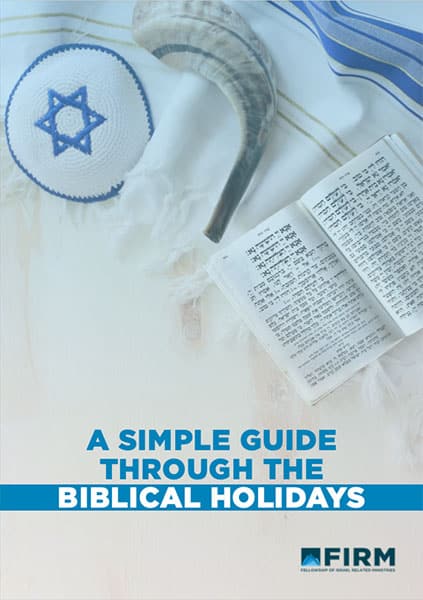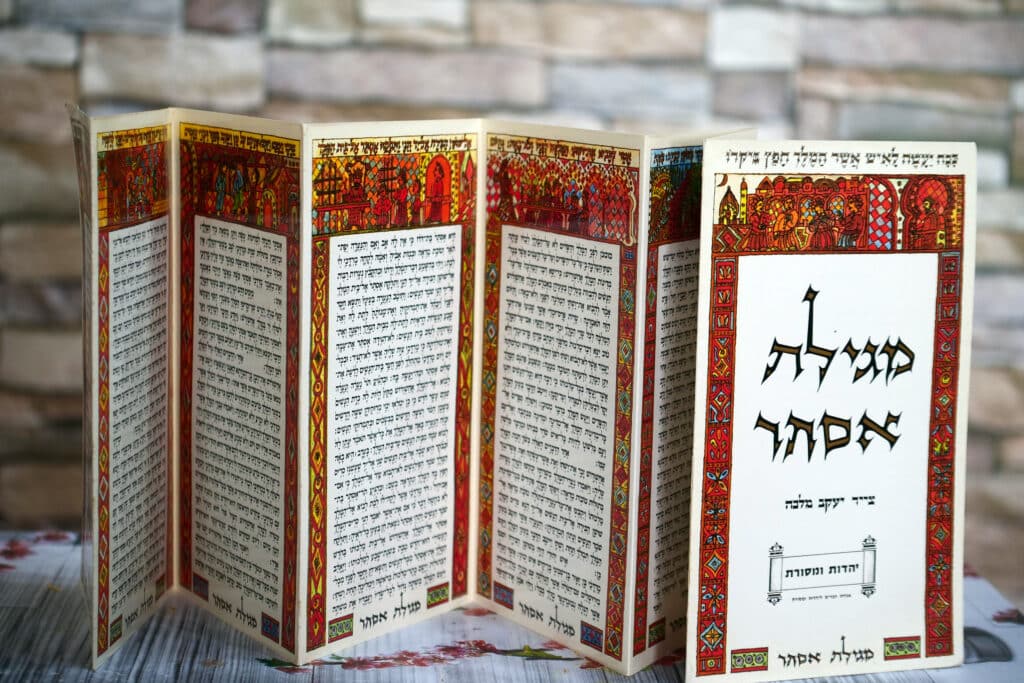This year, 2024, as Christians mark Holy Week to prepare for Easter (Good Friday and Resurrection Sunday), Jews are celebrating Purim. Calendar convergence of the two holidays is quite rare. Yet prophetic parallels do exist in this highly unusual overlap.
You may already know that Purim dates back to the Book of Esther. The merry festival recounts God’s victory over His enemies’ attempt to annihilate the Jews.
In the Hebrew calendar, Resurrection Day should be associated with Passover. But God mercifully speaks to His people through a variety of ways, and this year it is also through our unsynchronized calendars.
Purim and Easter: do they have anything in common?
First, let’s learn the back story. Both holidays reflect the ongoing war of Amalek against the God of Israel. In this war, God Himself battles for His people (Exodus 17:14-16).
Amalek was a descendant of Esau. In the Scriptures, Amalek epitomizes the spirit of anti-Semitism and is driven by pure evil. By extension, the Amalek spirit can manifest as the spirit of antichrist. On both Purim and Resurrection Day, God wondrously defeats Amalek, gaining sure victory for His people.
Hundreds of years before Esther’s day, God told King Saul to slay the Amalekite king, Agag. (1 Samuel 15) But Saul disobeyed. Later in history, when most of the Jewish people lived in the Persian Empire, it was an Agagite ruler named Haman who came close to destroying them all.
Not coincidentally, it was also a descendant of Saul, named Mordecai, who God used to defeat Haman’s genocidal plan. (Esther 2:5) Haman is described in Esther as a “tsorer.” In the Hebrew Scriptures “tsorer” is the word closest in meaning to “antichrist.” Thus, Haman can be seen as a type of antichrist.
Mysteries Abound around Purim
Mysteries abound in Esther (“Hadassah”). It is the only book in the Bible which does not mention God’s name. Nevertheless, His lead role in the story shouts loudly from behind the scenes. Divine finger and foot prints appear at every turn of events.
The Lord is always in control, no matter what personal, national or global crisis His people face. Sometimes, when we do not understand what is taking place or why, He has hidden Himself behind the scenes for a purpose greater than we’re to know at the time.
Esther and her Uncle Mordecai lived in Persia during the reign of King Ahaseurus (Xerxes). At Mordecai’s behest, Esther conceals her Jewish identity in order to marry the king and become Queen of Persia. The two can be seen as shining examples of followers of Yahweh.
But the rabbis have long questioned why Purim’s hero and heroine were still living in exile. Why weren’t they in the Promised Land when, many years earlier, King Cyrus had decreed the Jews could return to Judea?
Jewish life in Persia
The Jewish citizens of Persia were a prosperous lot. To a large extent, they’d assimilated into local pagan culture and enjoyed the comforts of exile.
Could this have been true of Mordecai and Esther? If not, the rabbis wonder, why would Mordecai encourage his niece to marry a nonbeliever. He supported her in living among those for whom the laws of Yahweh were irrelevant.
Mordecai also encouraged her to hide her Jewish identity. Why did she choose to follow his advice? Does God care if His people prefer exile? Perhaps these matters, like His role in the story, are intentionally concealed in this book.
If, however, Esther and Mordecai were simply human in many respects, Purim reveals even more powerfully how God’s mercy and grace extends to His people. He saves them despite their (and our) disobedience to fulfill His covenant purposes. He is faithful even when we are not.
Esther’s Lot is Ours
But now, back to the facts of the story. Haman, the king’s chief adviser, decrees that everyone in the empire must bow down before him. When Mordecai refuses to bow, Haman purposed to kill Mordecai—and all of Mordecai’s people. He sets the date for his genocidal campaign by casting lots or “purim.”
Queen Esther knows nothing of the plan until Mordecai, grieving and weeping, informs her. The fate of the Jews, he says, might depend on Esther’s willingness to intercede on their behalf and appeal to the king.
“Do not think that because you are in the king’s house,” he told her, “you alone of all the Jews will escape. For if you remain silent at this time, relief and deliverance for the Jews will arise from another place, but you and your father’s family will perish. And who knows but that you have come to royal position for such a time as this?” (Esther 4:13-14)
Concurrent Purim and Passover
Now, under Persian law, Esther would put her life at great risk if she appeared before the king unsummoned. So she replies to Mordecai,
“Go, gather together all the Jews who are in Susa, and fast for me. Do not eat or drink for three days, night or day. I and my maids will fast as you do. When this is done, I will go to the king, even though it is against the law. And if I perish, I perish.” (Esther 4:16, emphasis added)
Today, most Jews who observe the Esther Fast do so 1-3 days before Purim. The traditional rabbinic interpretation of Esther, however, is that the original fast actually took place at Passover. On the “13th day of the first month,” Haman issued his decree to annihilate the Jews (Esther 3:12). It was believed the fast began later that day or the next, although Scripture is not entirely clear.
In any case, “the first month” is Nisan. So, Passover would have occurred two days after Haman’s decree, on Nisan 15. If the traditional interpretation is correct, Esther’s original fast occurred during Passover. But this led to a dilemma.
Separation of Purim and Passover
Not eating or drinking at the time set by Esther would conflict with the traditional prohibition of fasting at Passover. Nevertheless, an exception may have been appropriate in Esther’s immediate situation.
The rabbis determined that the future fasting (to remember Esther’s fast) should happen at another time. Therefore, most Jews today who observe an Esther Fast do so on Adar 13. This wasn’t the date of the original fast, but the date set by casting lots for Jewish destruction.
The next day, on Adar 14, we merrily celebrate God’s turnaround victory as Purim. Based on Esther 9:18-22, “Shushan Purim” extends the holiday even through Adar 15.
Today’s pre-Purim Esther Fast may or may not prove consistent with the actual historical date. But it can still be of tremendous value. Your cry to God at this season for favor, deliverance and turnaround kingdom victory does matter!
Purim, the Cross and the Resurrection
In the book of Esther, when King Ahaseurus learns of Haman’s wicked scheme, divine turnaround follows. The king executes Haman and his sons on the very gallows Haman built to hang Mordecai.
Then he issues a decree authorizing the Jews to defend themselves against any who might attack them. As a result, “fear of the Jews” falls upon the Persian Empire. (Esther 8:17) Afraid to harm God’s people, many turn around and worship Him. Revival comes to the kingdom!
Esther proved courageously willing to lay down her life for God’s purposes. Today you and I are called to nothing less. The Lord of Love tells us to take up our cross and follow Him.
“For whoever wants to save his life will lose it, but whoever loses his life for Me [My people] will save it.” (Luke 9:24-25)
We surrender all at the cross. There, Yeshua’s embrace escorts us to heavenly courts in the spirit realm. As with Esther, He can use us to shift kingdom realities on earth. At the cross we engage with the prophetic parallel between Purim and Resurrection Day.
The Church in Royal robes
The cross, like Esther’s willingness to perish, leads to divine turnaround. There’s no better example of that than Resurrection Day! But make no mistake: the spirit of Haman/Amalek is still alive.
Globally, anti-Israel and antisemitic (as well as anti-Christian) events are escalating. In the face of mounting threats against His people, God is raising up an army of “Esthers.” He is building His Church. These valiant ones will stand before The King—and kings—to intercede on Israel’s behalf.
If today’s Esthers keep silent, God will see that relief and deliverance for the Jews comes from another source. But the Church will begin to perish, in the sense that she will diminish in her full identity and destiny.
Dear Christian friend, “who knows but that you have come to royal position in the kingdom for such a time as this?” Will you embrace the cross, knowing your intercessory prayers and deeds will lead to turnaround victory?
If you do, rejoice with me and be greatly encouraged, for wondrous resurrection is ahead! Happy Resurrection Day and Chag Purim Sameach (“Happy Purim”)!
This article has been edited in March 2024, to reflect the correct holiday dates of the current year.

A Simple Guide Through the Biblical Holidays: Free PDF Download
You may know them as the “Jewish holidays,” but did you know the Bible calls them “Feasts of the LORD”?
We’ve put this guide together for you so that you have all you need to know about these holidays that God calls His own.
Articles Related to Purim and Easter: What do They Have in Common?
Estimated reading time: 8 minutes


